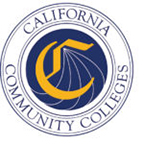 The customized training unit at a California Community College provides responsive, industry-specific employee training and workplace education to businesses, municipalities, and government agencies. The mission of this training function perfectly complements and aligns with the community college system’s crucial mission of economic and workforce development.
The customized training unit at a California Community College provides responsive, industry-specific employee training and workplace education to businesses, municipalities, and government agencies. The mission of this training function perfectly complements and aligns with the community college system’s crucial mission of economic and workforce development.
“The community college systems’s Economic and Workforce Development Program (EWD) aims to “invest in California’s economic growth and global competitiveness through industry-specific education, training, and services that contribute to a highly-skilled and productive workforce.”
Sandra Sisco, current director for the Chaffey College InTech Center, states, “Our program’s agility enables us to respond quickly to employers’ short-term training and education needs. By being responsive and delivering quality, customized employee training programs, the InTech Center’s staff engenders trust and builds long-term relationships with industry.”
Keeping Community Colleges on the Forefront of Industry Trends
At many community colleges, the staff of the employee training are the leading force in establishing a dynamic presence for the college within the business community. Through regular meetings with business executives, workforce development practitioners gain a thorough understanding of industry’s most pressing and urgent training and education needs. Janet Malig, deputy sector navigator for advanced transportation at California Community Colleges, states, “These staff play a crucial role in keeping the entire college, including the academic programs, apprised of the latest industry trends and advances.”
 Steve Knox, executive director of the State of CA Employment Training Panel, describes the employee training function within the community colleges as “key in developing outreach to employer groups.” He adds, “These staff members at many colleges have established themselves as the frontline players we look to for gathering the industry intelligence we need to develop the funds that meet employers’ training needs.”
Steve Knox, executive director of the State of CA Employment Training Panel, describes the employee training function within the community colleges as “key in developing outreach to employer groups.” He adds, “These staff members at many colleges have established themselves as the frontline players we look to for gathering the industry intelligence we need to develop the funds that meet employers’ training needs.”
To shed further light on the value this employee training function brings to a community college and to regional industry, we present excerpts of interviews conducted with Kathy Dutton, (former) director of economic development for Chaffey College, and Rod Hoover, manager of human resources for California Steel Industries. During these interviews, Ms. Dutton and Mr. Hoover talked about their long-standing partnership, the value that community colleges bring to local employers, and how their collaboration lead to the funding and development of the renowned InTech Regional Training Center. But first, some brief background on both organizations.
About Chaffey College
![]() Chaffey College, located in Rancho Cucamonga, Calif., has one of the most vibrant and successful employee training units in the entire system of 114 California Community Colleges. For 18 years, Ms. Dutton oversaw the college’s employee training unit. She also directed the Trade Adjustment Assistance Community College and Career Training (TAACCCT) grant, which she was instrumental in securing by forming a partnership with regional manufactures, government, and other community colleges in the Inland Empire region. The TAACCCT grant secured through Ms. Dutton’s leadership provided $14.9 million for the development of the InTech Regional Training Center, located on the campus of California Steel Industries in Fontana, Calif.
Chaffey College, located in Rancho Cucamonga, Calif., has one of the most vibrant and successful employee training units in the entire system of 114 California Community Colleges. For 18 years, Ms. Dutton oversaw the college’s employee training unit. She also directed the Trade Adjustment Assistance Community College and Career Training (TAACCCT) grant, which she was instrumental in securing by forming a partnership with regional manufactures, government, and other community colleges in the Inland Empire region. The TAACCCT grant secured through Ms. Dutton’s leadership provided $14.9 million for the development of the InTech Regional Training Center, located on the campus of California Steel Industries in Fontana, Calif.
About California Steel Industries (CSI)
 Located approximately 50 miles east of Los Angeles in Fontana, Calif., CSI has more than 900 employees. CSI’s plant sits on 450 acres, with approximately 115 acres indoors. The company is the leading producer of flat rolled steel in the Western United States, producing the widest range of flat rolled steel products in the region.
Located approximately 50 miles east of Los Angeles in Fontana, Calif., CSI has more than 900 employees. CSI’s plant sits on 450 acres, with approximately 115 acres indoors. The company is the leading producer of flat rolled steel in the Western United States, producing the widest range of flat rolled steel products in the region.
Rod Hoover: CSI’s Recruiting Blues
 “Back in the 1990’s, our company was finding it difficult to recruit and retain maintenance electricians. Qualified people were hard to find. When we did find the right people, we were often competing with other companies for them. Because of this scarcity of qualified local workers, we often had to recruit from outside the area and from out of state. The problem was that those workers typically stayed with us for only a few years and then returned to where they came from. Our analysis revealed that the attrition rate for non-local recruits was around 50 percent. Obviously, we were not getting a great return on our investment from hiring and training those people.
“Back in the 1990’s, our company was finding it difficult to recruit and retain maintenance electricians. Qualified people were hard to find. When we did find the right people, we were often competing with other companies for them. Because of this scarcity of qualified local workers, we often had to recruit from outside the area and from out of state. The problem was that those workers typically stayed with us for only a few years and then returned to where they came from. Our analysis revealed that the attrition rate for non-local recruits was around 50 percent. Obviously, we were not getting a great return on our investment from hiring and training those people.
“To address this recruiting problem, our company contacted Chaffey College to help us develop an intensive, high-quality, not-for-credit training program to develop our own pool of maintenance electricians. Working in collaboration with Kathy Dutton at Chaffey College, we developed an employee training program that focused on topics that were important to us. To ensure the training program would be viable for the long term, we reached out to other manufacturing and distribution companies that also wanted to train their employees. Kathy and Chaffey College were instrumental in helping us put this all together.”
Rod Hoover: The Partnership History
“Our training partnership with Chaffey started in the 1990’s. I inherited the partnership when I started with CSI in 2000. We have steadily increased the program’s capacity to train more technicians. Currently, the programs can accommodate 15 people at a time. Each employee receives 550 hours of instruction over the course of a year or more. That coursework, coupled with on-the-job training, enables an employee to achieve journey-level electrician status in two years.”
“To match the successes we were having with our electrician training program, in 2002 we started a mechanical training program with San Bernardino Valley College. This program was very successful. We were turning out journeymen-level mechanics in two years. Because we selected the best of the best for the training, they came up to speed quickly. Their on-the-job experience enabled them to absorb and apply what they learned. We frequently have vacancies for these types of positions due to retirement and turnover, and this program enables us to fill them.”
Rod Hoover: Employee Training Program Success
“The success of these two programs has been significant. We are now seeing an attrition rate of less than 10 percent for workers we train in-house. It has become evident that our efforts to develop and train our own internal workforce is paying off.”
“We have a great relationship with the local community colleges and the other manufacturers in the area. It’s been a win-win. Chaffey College delivers high-quality instruction that meets the needs of our regional manufacturers and enhances our skilled workforce. Our partnership with the local community colleges is an essential component of our workforce training and development strategy.”
Kathy Dutton: Moving at the Speed of Business
“Our partnerships with regional employers require us to respond quickly to their urgent training and educational needs. The customized training unit is perhaps the most agile function within a community college. We can respond to an employer’s need and develop contextualized training programs within weeks. For example, in the last six weeks alone, we’ve delivered two new training courses that were launched and ready for enrollment within two weeks of the employer’s request. For the training classes, we can provide a highly qualified trainer or use one that the employer has identified. We are changing the notion that dealing with the community college system is like dealing with a behemoth ocean liner that can’t respond quickly. Our employee training unit is more like a speedboat. It can turn on a dime.”
Kathy Dutton: Not-for-Credit Employee Training Programs Feed Academic Programs
“Here at Chaffey College, we are fortunate to have the support of our president/CEO, and associate superintendent, who both understand economic and workforce development. Additionally, our dean recognizes that the not-for-credit classes we develop for industry are often the gateway for many employees to enter the for-credit programs at the college. Those classes help to demystify college, bolster confidence, and often motivate incumbent workers to enroll in for-credit classes held on campus.”
Rod Hoover: Collaboration Breeds a Brilliant Idea
“Back around 2008 or 2009, I mentioned to Kathy that we had a vacant facility here at California Steel Industries. We started talking about what was a wild idea at the time: developing a regional training center on our campus in Fontana, Calif., which is in the heart of the Inland Empire. Kathy mentioned it had been a long time since she had come across a grant that provided for the renovation of a facility. She optimistically said that one of these days, one such grant would come around. In the meantime, we continued to send our employees to Chino for electrical training with Chaffey College and to San Bernardino for mechanical training with Valley College. Things were going along just fine. Then one day a few years back, Kathy called me to say she had just found a grant from the Department of Labor called the Trade Adjustment Assistance Community College and Career Training grant, which included money for facility renovation. She suggested we put a together a collaborative program with California Steel industries, the Manufacturers’ Council of the Inland Empire, and with other community colleges in the region. She was confident that we could win the grant. Kathy took the lead on getting the various partners informed, organized, and motivated to move forward. The application for the grant was submitted on July 4, 2014. On September 29, 2014, we were notified we had been awarded a grant for $14.9 million to launch a regional training center here at CSI. Our board of directors agreed to provide a long-term, no-cost lease for the facility as well as an additional $3 million for additional renovations. The reason our board agreed to this was because of the great success we’ve had training our employees through contract education programs.”
Rod Hoover: The Industrial Technical Learning Center Opens Its Doors
“On March 23, 2016, The Industrial Technical Learning Center (InTech Center) opened its doors on our CSI campus near Fontana, Calif. To date, approximately 600 to 700 people have been trained at the Center. To meet the conditions of the grant, we have to train 2,000 people by the end of the fourth year, which is one year from now. By this time next year, we will have surpassed the grant’s requirements. We estimate 3,500 people will have been trained by then. We’ve transferred many of the training programs that were being held in remote locations to the Center, which is a much more convenient locale. This has made scheduling much easier and more accessible for all those being trained at the Center. Initially, our employees comprised most of the trainees, but now at least half of them are coming from the for-credit programs at other local community colleges such as Barstow, Chaffey, Norco, Riverside, and Victorville.”
“Our partner colleges and organizations also offer training programs that can be mixed and matched in a coordinated effort to facilitate a broader depth of learning. Because these partners also provide additional training locations throughout the Inland Empire, additional teaching expertise, facilities, and resources provide learners with hands-on opportunities that foster a deeper understanding of the workplace.”
CSI is now allowing our qualified maintenance engineers, supervisors and journey-level craft employees to be technical trainers at the InTech Center. They teach during their off hours and are paid by the colleges. This provides trainees with “real-world” instructors who can explain how the theory applies in the workplace.
Kathy Dutton: The Department of Labor Takes Notice
“The Department of Labor has been on-site at the InTech Center to monitor the implementation of the TAACCCT grant. They said they had not seen anything like this collaboration. It’s rare to have government, education, and industry working so well together. Our success prompted the Department of Labor to highlight the InTech Center project and Chaffey College in their best practices report.
“What we’ve achieved with the InTech Center could be repeated almost anywhere in California. The key to the project’s success was the collaboration with other community colleges in the region.”
The InTech Center’s Key Partners:
Private Partners
- California Steel Industries, Inc.
- 50+ Members of the Manufacturers’ Council of the Inland Empire—A Consortium
Public Workforce System Partners
- San Bernardino County Workforce Investment Board
- Riverside County Workforce Investment Board
- California Workforce Services Division, Economic Development Department
For more information on the customized employee training programs delivery by the Chaffey College InTech Center, please contact:
Jon Fox
Business Liaison
Office: 909-652-8492
Mobile: 909-553-0071
Email: CustomizedTraining@chaffey.edu



Comments are closed.